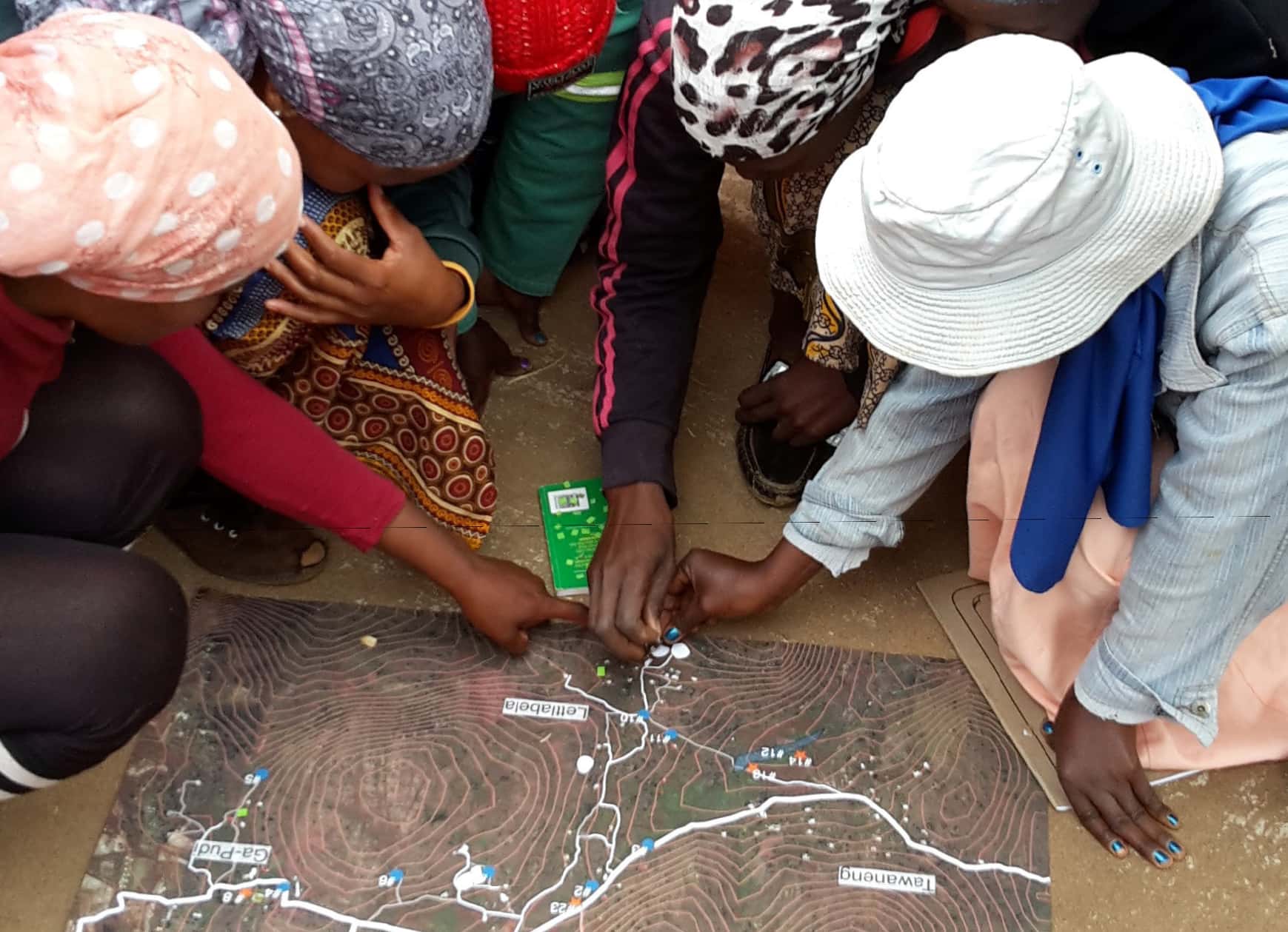
Linking Water, Culture, Heritage and SDGs 1, 2 and 5

Downloads
DOI:
https://doi.org/10.58981/bluepapers.2022.1.03Published
Issue
Section
License
Copyright (c) 2022 Barbara van Koppen

This work is licensed under a Creative Commons Attribution 4.0 International License.
How to Cite
Abstract
Heritage and culture not only shape the customary tenure of land and forest resources of most indigenous peoples and local communities in low-income rural areas, but also community members’ mutual relations vis-à-vis their water resources, or, in other words: customary water tenure. Age-old settlement by farm communities or pastoralists’ establishment of nomadic routes vested customary rights to land and the fugitive surface runoff and streams flowing over the lands; soil moisture, wetlands and lakes on the land; and aquifers under the land.
In customary water tenure, orally transmitted norms and practices have governed communities’ construction, operation and maintenance of traditional local infrastructure, such as weirs, dams and ponds, to store water as buffer to seasonal variability; wells and lifting devices to tap aquifers, the planet’s largest storage; and canals, tunnels and pipes to channel water where and when needed for drinking, other domestic uses, livestock, irrigation of crops, vegetables and trees, brick making, crafts, small-scale enterprise and ceremonial uses, or to ensure water availability for fisheries and navigation. Customary normative frameworks continue to shape communities’ investments in “modern” low-cost plastic pipes, tanks, small motorized pumps, or solar energy, also responding to growing populations, markets for water-dependent produce, and higher aspirations.
References
Boelens, Rutgerd, and Jeroen Vos. 2014. “Legal Pluralism, Hydraulic Property Creation and Sustainability: The Materialized Nature of Water Rights in User-Managed Systems.” Current Opinion in Environmental Sustainability 11: 55–62. https://doi.org/10.1016/j.cosust.2014.10.001.
Bosch, Hilmer J., and Joyeeta Gupta. 2022. “Water Property Rights in Investor-State Contracts on Extractive Activities, Affects Water Governance: An Empirical Assessment of 80 Contracts in Africa and Asia.” Review of European Comparative and International Environmental Law (RECIEL) 31, no. 2: 295–316. https://doi.org/10.1111/reel.12436.
Caponera, Dante. 2007. Principles of Water Law and Administration: National and International. 2nd ed., revised and updated by Marcella Nanni. London: Taylor and Francis.
Dahl, Gudrun, and Gemetchu Megerssa. 1990. “The Sources of Life: Boran Conceptions of Wells and Water.” From Water to World-Making. African Models and Arid Lands, edited by Gísli Pálsson, 21–38. Uppsala: Scandinavia Institute of African Studies.
FAO. 2020. Unpacking Water Tenure for Improved Food Security and Sustainable Development. Land and Water Discussion Paper 15. Rome: Food and Agriculture Organization of the United Nations (FAO). https://doi.org/10.4060/cb1230en.
Franco, Jennifer, Lyla Mehta, and Gert Jan Veldwisch. 2013. “The Global Politics of Water Grabbing.” Third World Quarterly 34, no. 9: 1651–75. https://doi.org/10.1080/01436597.2013.843852.
Giordano, Meredith, Charlotte de Fraiture, Elizabeth Weight, and Julie van der Bliek, eds. 2012. Water for Wealth and Food Security: Supporting Farmer-Driven Investments in Agricultural Water Management. Synthesis Report of the AgWater Solutions Project. Colombo, Sri Lanka: International Water Management Institute (IWMI). https://doi.org/10.5337/2012.207.
Hellum, Anne, Patricia Kameri-Mbote, and Barbara van Koppen, eds. 2015. Water Is Life: Women’s Human Rights in National and Local Water Governance in Southern and Eastern Africa. Harare, Zimbabwe: Weaver Press. http://hdl.handle.net/10568/69484.
Intergovernmental Panel on Climate Change (IPCC). 2022. “Summary for Policymakers.” In Climate Change 2022: Impacts, Adaptation and Vulnerability. Contribution of Working Group II to the Sixth Assessment Report of the Intergovernmental Panel on Climate Change, edited by H. O. Pörtner, D.C. Roberts, M. Tignor, E.S. Poloczanska, K. Mintenbeck, A. Alegría, M. Craig, et al., 3–33. Cambridge: Cambridge University Press. https://doi.org/10.1017/9781009325844.001.
Izzi, Gabriella, Jonathan Denison, and Gert Jan Veldwisch, eds. 2021. The Farmer-Led Irrigation Development Guide: A What, Why and How-To for Intervention Design. Washington DC: World Bank. Available at https://pubdocs.worldbank.org/en/751751616427201865/FLID-Guide-March-2021-Final.pdf.
Jackson, Sue. 2018. “Indigenous Peoples and Water Justice in a Globalizing World.” In The Oxford Handbook of water politics and policy, edited by Ken Conca and Erika Weinthal. New York: Oxford University Press. https://doi.org/10.1093/oxfordhb/9780199335084.013.5.
Komakech, Charles Hans. 2013. Emergence and Evolution of Endogenous Water Institutions in an African River Basin: Local Water Governance and State Intervention in the Pangani River Basin, Tanzania. PhD dissertation. UNESCO-IHE Institute for Water Education, Delft, the Netherlands. Leiden: CRC Press/Balkema. Available at http://resolver.tudelft.nl/uuid:323d4b64-3c8e-45b3-aa79-91aeae47cf34.
Ramazzotti, Marco. 1996. Readings in African Customary Water Law. FAO Legislative Study 58. Rome: Food and Agriculture Organization of the
United Nations (FAO). https://www.fao.org/3/w0046b/w0046b.pdf.
Rights and Resources Initiative (RRI); Environmental Law Institute (ELI). 2020. Whose Water? A Comparative Analysis of National Laws and Regulations Recognizing Indigenous Peoples’, Afro-Descendants’, and Local Communities’ Water Tenure. Washington DC: RRI. https://doi.org/10.53892/DRQB6907.
Schreiner, Barbara, and Barbara van Koppen. 2018. Establishing Hybrid Water Use Rights Systems in Sub-Saharan Africa: A Practical Guide for Managers. Pretoria: Pegasys Institute and International Water Management Institute (IWMI). Available at https:// publications.iwmi.org/pdf/H048975.pdf.
Sutton, Sally, and John Butterworth. 2021. Self-Supply: Filling the Gaps in Public Water Supply Provision. Rugby, Warwickshire, UK: Practical Action Publishing. Available at https://practicalactionpublishing.com/book/2530/self-supply.
Tapela, Barbara N. 2015. Water Governance in Traditional Rural Communities of South Africa: Report on Policy Options for Effective Water Governance in Traditional Rural Communities. WRC Report No. KV 343/15. Pretoria: Water Research Commission. Available at http://wrcwebsite.azurewebsites.net/wpcontent/uploads/mdocs/KV%20343-15.pdf.
Troell, Jessica, and Stephanie Keene. 2022. Legal Recognition of Customary Water Tenure in Sub-Saharan Africa: Unpacking the Land-Water Nexus. IWMI Research Report 182. Colombo, Sri Lanka: International Water Management Institute (IWMI). https://doi.org/10.5337/2022.215.
Van Koppen, Barbara, and Barbara Schreiner. 2018. A Hybrid Approach to Decolonize Formal Water Law in Africa. IWMI Research Report 173. Colombo, Sri Lanka: International Water Management Institute (IWMI). https://doi.org/10.5337/2018.219.
Van Koppen, Barbara. 2022. Living Customary Water Tenure in Rights-Based Water Management in Sub-Saharan Africa. IWMI Research Report 183. Colombo, Sri Lanka: International Water Management Institute (IWMI). https://doi.org/10.5337/2022.214.
Woodhouse, Philip, Gert Jan Veldwisch, Jean-Philippe Venot, Dan Brockington, Hans Komakech and ngela Manjichi. 2017. “African Farmer-Led Irrigation Development: Re-Framing Agricultural Policy and Investment?” Journal of Peasant Studies 44, no. 1: 213–33. http://doi.org/10.1080/03066150.2016.1219719.


